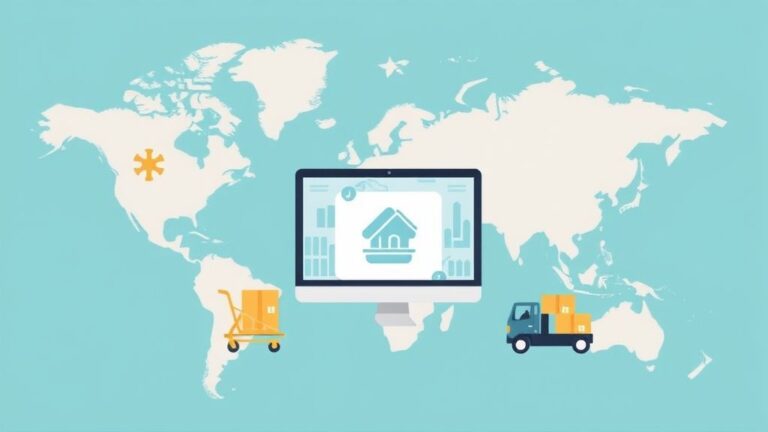In this guide, we’ll explore how eCommerce businesses can optimize their shipping strategy, reduce costs, and provide a better experience to global customers. And with platforms like ShippingToGo, managing logistics becomes simpler, smarter, and more profitable.

Introduction to eCommerce & Global Logistics
E-commerce, or online selling, has revolutionized the way businesses operate. Whether you’re selling handmade items from your home or managing a growing online store, shipping is a critical part of your success. One of the most significant challenges for any eCommerce business is handling international shipping efficiently.
That’s where ShippingToGo comes in: an advanced shipping comparison platform built specifically to help eCommerce sellers manage their logistics smoothly, affordably, and with full transparency.
Why International Shipping Matters in eCommerce
International shipping isn’t just a delivery service—it’s a business enabler. A streamlined shipping process means:
-
Faster delivery = happier customers
-
Better rates = higher profit margins
-
Smarter logistics = easier scaling
However, cross-border shipping involves challenges like customs, taxes, shipping delays, and fluctuating rates. eCommerce sellers need reliable solutions that remove the guesswork.
The Most Common Shipping Challenges for eCommerce Stores
High Shipping Costs
Shipping internationally is expensive—especially for small stores. Carriers price shipments based on weight, volume, destination, and urgency. Not comparing rates can eat into your profits.
Customs and Import Regulations
Each country has its own customs forms, taxes, and product restrictions. Mistakes in documentation or shipping prohibited items can result in delays or seized packages.
Delivery Speed and Tracking
Customers expect real-time tracking and short delivery windows. Without the right partners, your packages could take weeks to arrive without updates.
How ShippingToGo Helps eCommerce Businesses
Compare Rates from Top Carriers
Use ShippingToGo’s platform to instantly compare international shipping rates from leading providers like DHL, UPS, FedEx, and more. We show you the best deals with full transparency.
Book & Manage Shipments in One Place
Forget switching between courier websites. Manage all your shipping in a centralized dashboard—generate labels, schedule pickups, and track all your orders from one place.
Handle Customs with Confidence
Our system guides you through what’s needed for each destination country, so your packages avoid customs delays and arrive smoothly.
Perfect for Shopify, Etsy, WooCommerce & Wix Stores
ShippingToGo integrates with top eCommerce platforms. Orders flow in automatically, so you can ship faster without copy-pasting addresses or manually entering data.
Table: Key Features for eCommerce Sellers Using ShippingToGo
| Feature | Benefit for Sellers |
|---|---|
| Price Comparison Tool | Save on every shipment |
| Platform Integrations | No manual data entry; orders sync automatically |
| Customs Form Assistance | Avoid delays and rejections |
| Live Tracking | Keep customers informed |
| Multi-Courier Options | Choose by price, speed, or service level |
Tips to Optimize International Shipping in Your eCommerce Business
Use Volume-Optimized Packaging
Carriers charge by dimensional weight. Avoid overpacking and use right-sized boxes to lower shipping costs.
Offer Express & Economy Options
Let your customer choose between speed and savings. Use ShippingToGo to offer both options at checkout.
Pre-fill Customs Forms Automatically
Speed up fulfillment by automating customs declaration forms for frequent destinations.
Monitor Delivery Performance
Track which carriers deliver on time and offer better service in specific regions. Use that data to optimize future shipments.
FAQ – eCommerce Shipping with ShippingToGo
Can I use ShippingToGo for bulk orders?
Yes! Whether you’re sending one package or 100, ShippingToGo supports batch shipments and discounts.
Does ShippingToGo support returns?
Yes, you can generate return labels and manage reverse logistics easily through our dashboard.
Is there insurance included?
ShippingToGo offers optional shipment insurance for valuable orders.
Can I connect my Shopify/Etsy/Wix store?
Absolutely. Our platform integrates seamlessly with major platforms so orders import automatically.